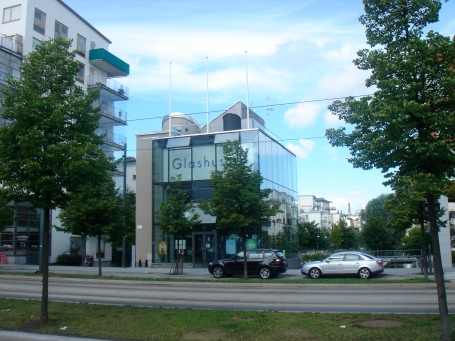Posts tagged ‘Environmentally friendly’
Hammarby, the eco-friendly district in Stockholm
As I already mentioned in one of my previous posts, I visited Stockholm some weeks ago. Stockholm is 2010 European Green Capital and a city full of nature, water and parks.
I was very curious about the new eco-friendly district of Hammarby. This new district is the result of the urban re-designing of an area situated in the southern part of the city. This was an industrial area occupied by workshops and small factories (in many cases without permission).
The City decided to expand to the south and the district of Hammarby was the best area to do so. The requirements were set very high from the very beginning, and the new constructions were built according to the latest environmental requirements.
Re-designing a new district is something that takes a very long time, from the planning to the implementation. Many aspects need to be taken into account, especially if the aim is creating a place where people want to live according to high quality standards and, at the same time, with the highest respect to the environment.
The new district of Hammarby is impressive. It is considered as a model of urban sustainable development. Again, green and water are everywhere, which is not new in a city like Stockholm.
I visited the GlashusEtt, Hammarby information centre, where hey encouraged me to walk around the district, take pictures and check the inner patios. The GlashusEtt plays a very important role as a place where citizens can look for information, and where they can get assistance concerning waste management, energy efficiency and other issues dealing with sustainability.
Waste and Energy
The buildings have been built in order to fulfill high standards of energy efficiency, and there is an advanced waste treatment system.
One of the things that got my attention was that the apartment buildings display big windows to capture the sunlight and save energy costs, which is so important in the long Swedish winter, and the not so sunny Scandinavian summer.
Some of the buildings have solar panels. Biofuel from organic waste and biogas from waste water (sewage sludge) allow that the district creates great part of the energy used, allowing a high degree of self-sufficiency (the aim is that, when the district is fully built in 2017, Hammarby residents produce 50% of the energy they require).
Furthermore, rainwater is drained into the Hammarby lake, after proper treatment, allowing it to re-join the natural water cycle.
A District Built at Human Scale
To walk through the streets of Hammarby is a relaxing experience, the district is built at a human scale and one has the impression that life happens in a continuum between the apartments and the streets. The “dividing line” between apartments and street is very blurry. People living in Hammarby can enjoy street life thanks to their gardens and community patios.
You can actually watch people in the street, basking in the sun, kids playing in the street. Hammarby is a living quarter, with shops, restaurants and small businesses.
Preserving Biodiversity
The planners have tried to preserve biodiversity, by preserving an old oak wood with old trees. At first it was planned that this oak wood should be cut down, however, protests from the people could save this area, which now connects the district with its rural past.
Furthermore, in order to preserve biodiversity, the planners have built eco-corridors that cross the highway (!). This way, seeds and animals can easily cross over the highway. These corridors are actually bridges fully covered with green (trees, plants etc.)
The City Bought the Land
I think that one of the secrets of the success of Hammarby is that the City bought the land prior to proceeding with the planning and construction of the district. This prevented from speculation and makes a difference compared to other new-built areas in Europe.
Criticism
It’s hard to think that such a project could raise criticism, however there are some things that were pointed out by people I was talking to during my holidays in Stockholm:
- Transport. Hammarby District is not in the centre of Stockholm and the lake acts a natural barrier between the district and the rest of the city. Many complained that it is not easy to reach Hammarby, however, the district is well covered by bike lanes and bus lines. The new tramway that will connect Hammarby with Slussen (Stockholm downtown) will soon be working. Furthermore there is a free ferry that connects Hammarby with Stockholm every 10 minutes.
- Housing prices. Living in a place like Hammarby is not cheap. It is a fancy, new, citizen-friendly district where housing prices are high, despite the fact that many of the apartments are public property. If Hammarby becomes a district for hipsters then the model will have failed; let’s just hope it won’t be the case.
- Transition model. There are allotment gardens in one of the blocks, and some of the neighbors grow their own vegetables in the balconies or in collective areas. However ,the whole idea of sustainability and green would be much more reinforced if the district would support other ways of sustainability, such as the transition model. In many ways, Hammarby is already a place where they produce their own energy, but I think that Hammarby should do more in terms of being less dependent from food coming from outside the district, that is producing their own food (in community gardens, etc) thus reducing the carbon footprint.






Debe estar conectado para enviar un comentario.